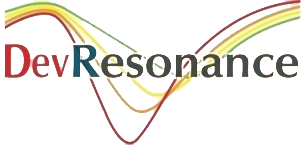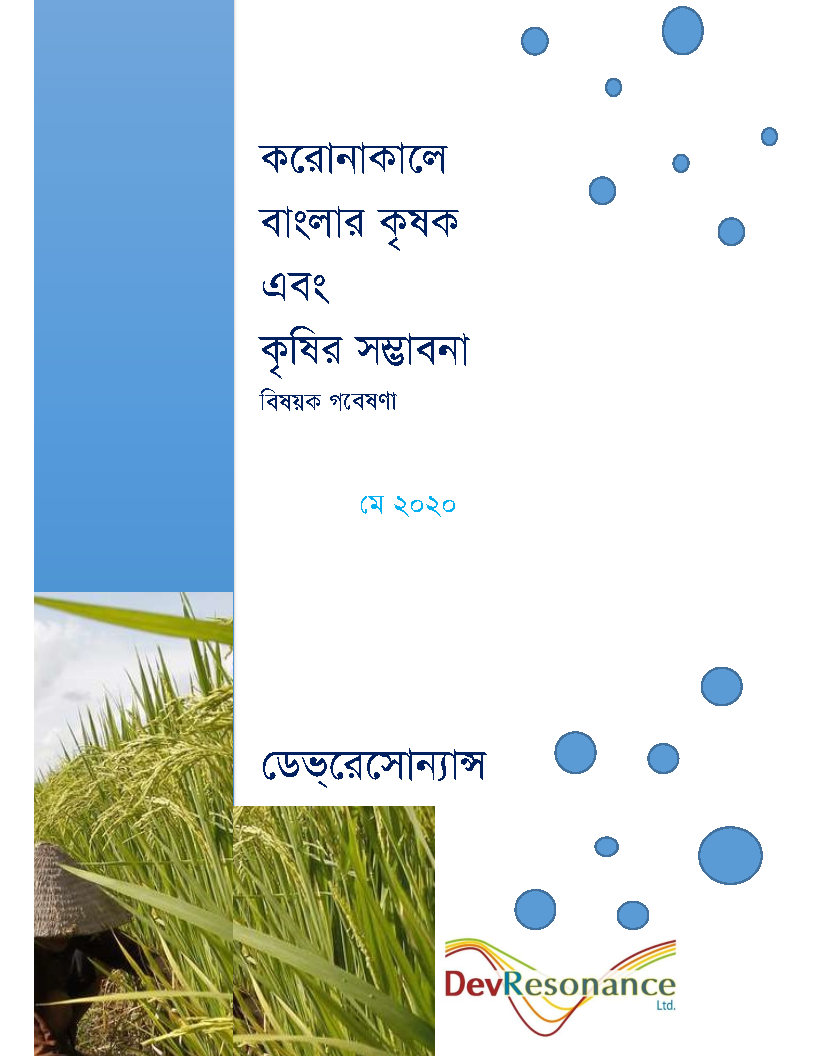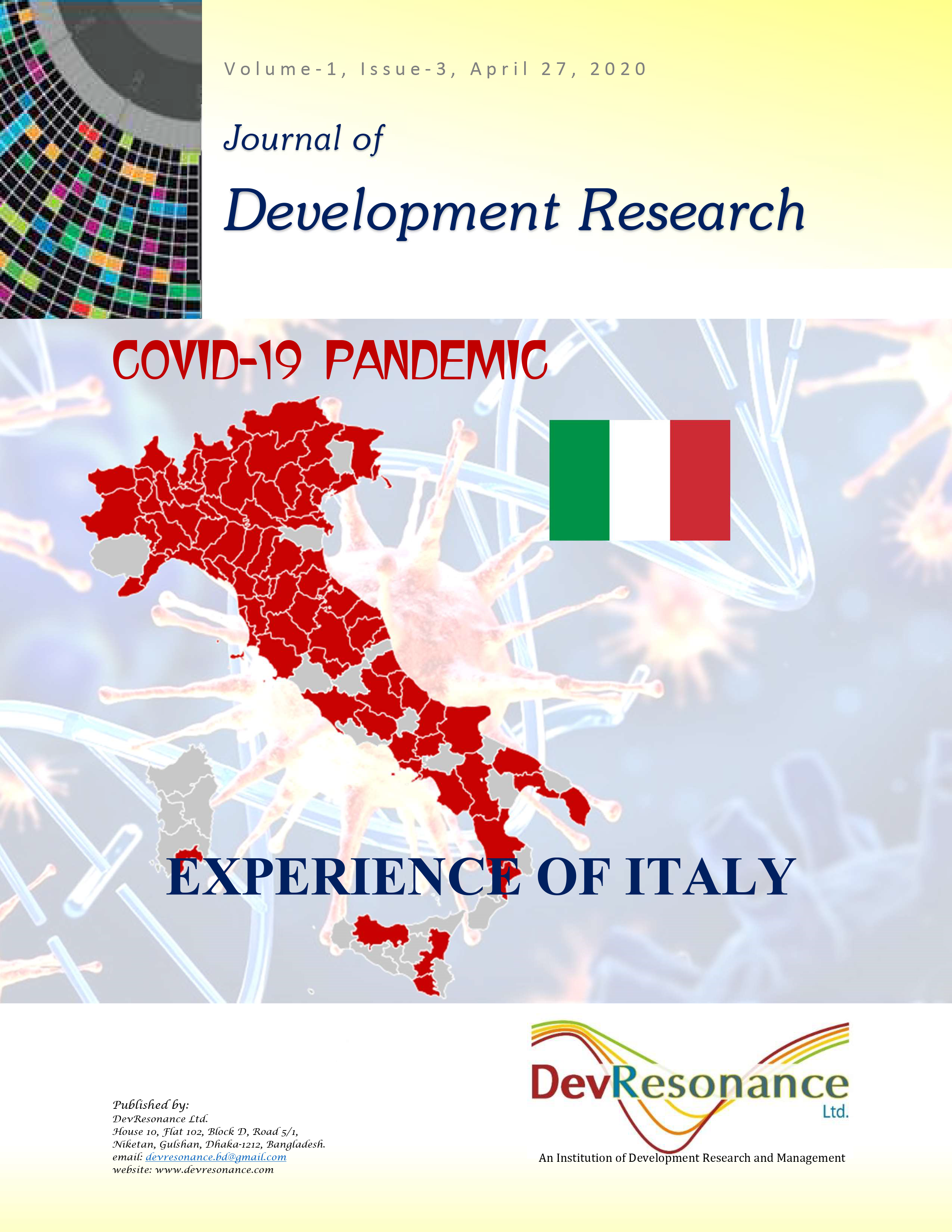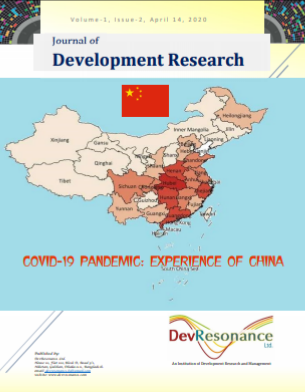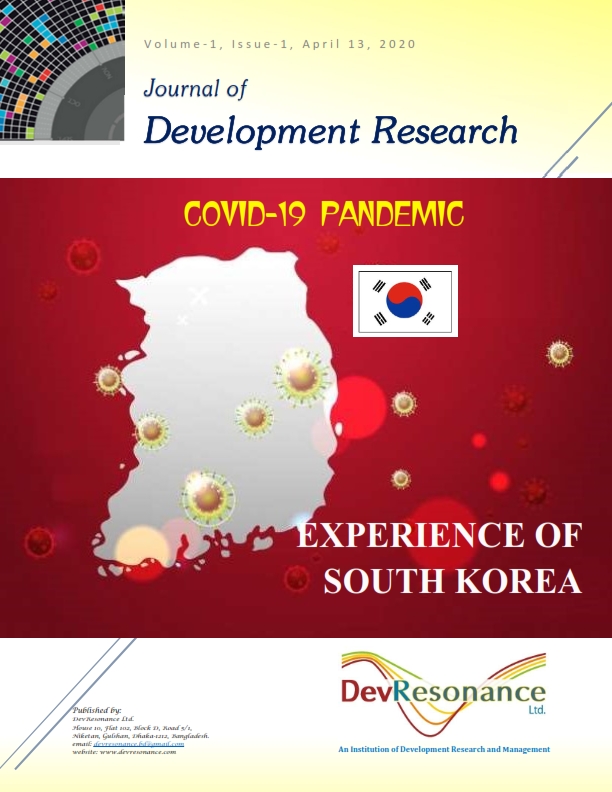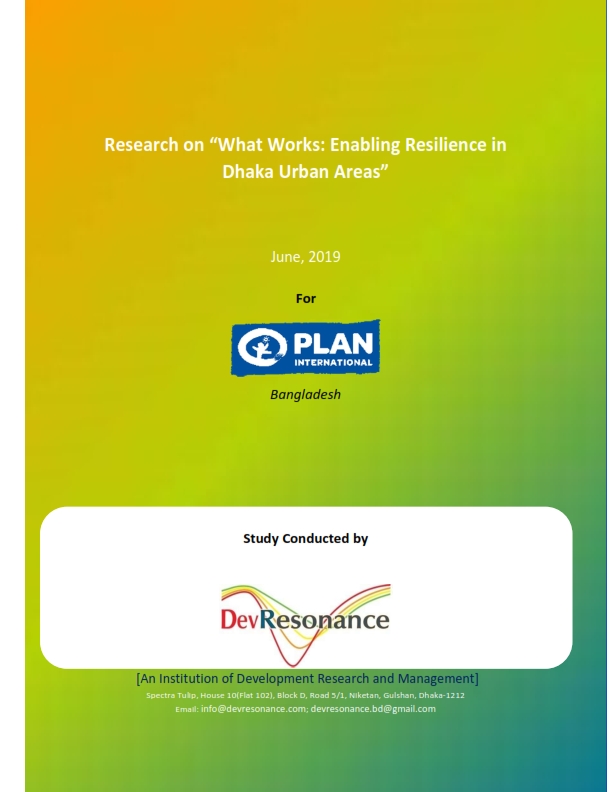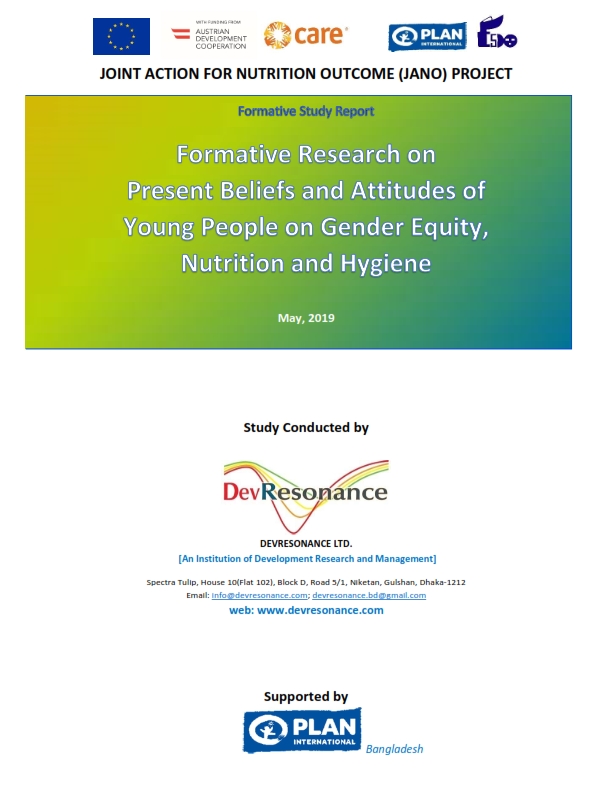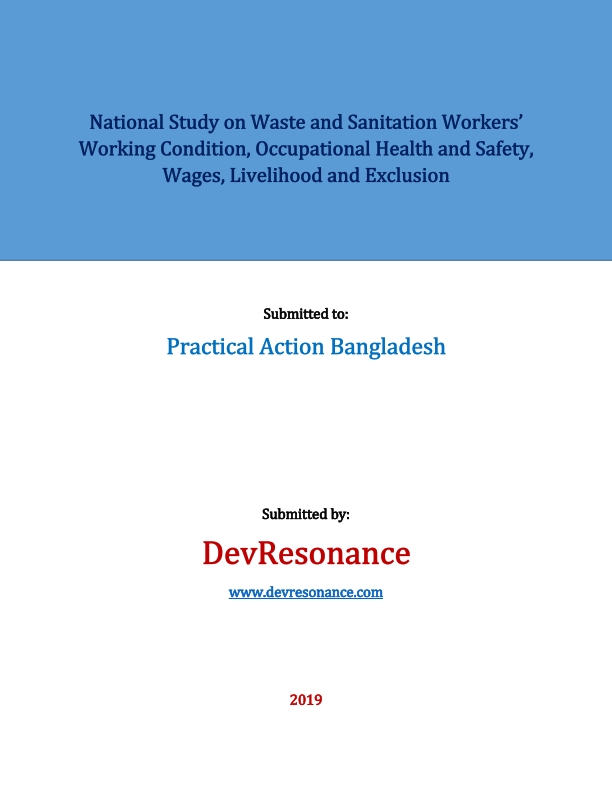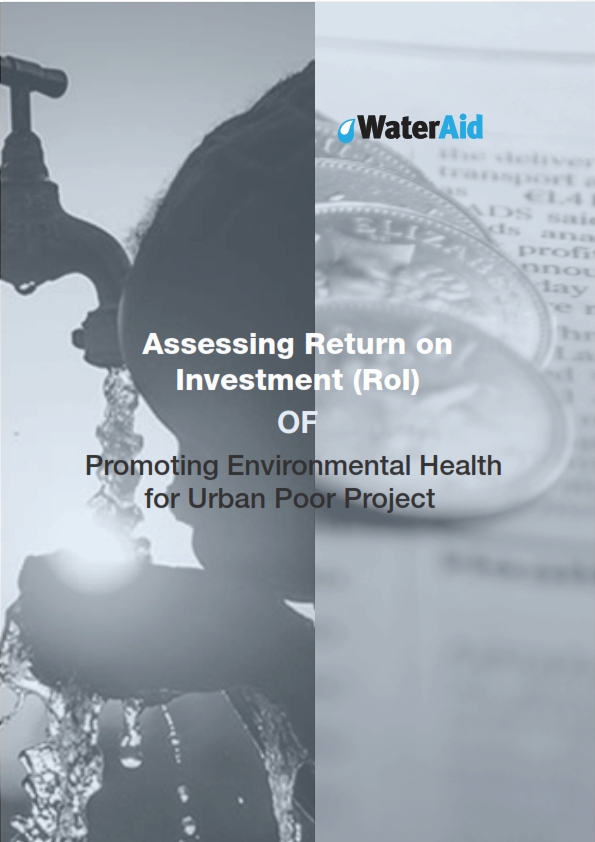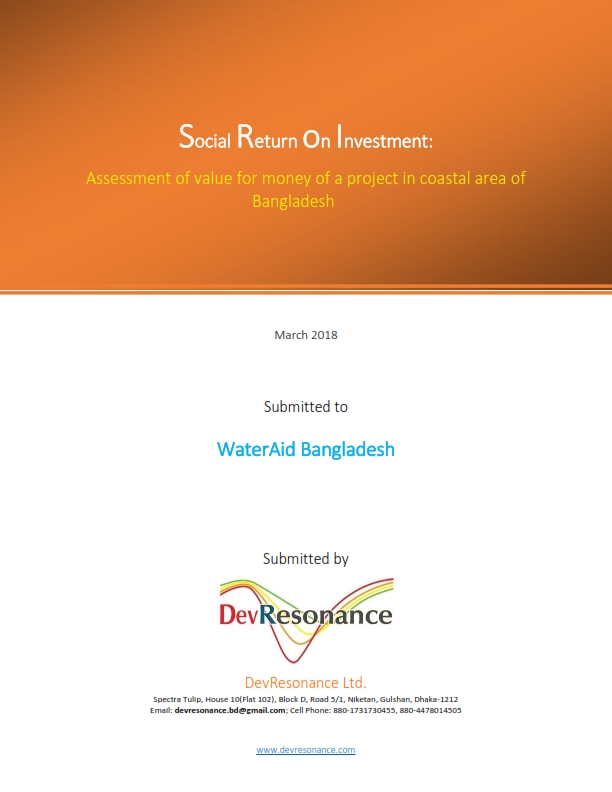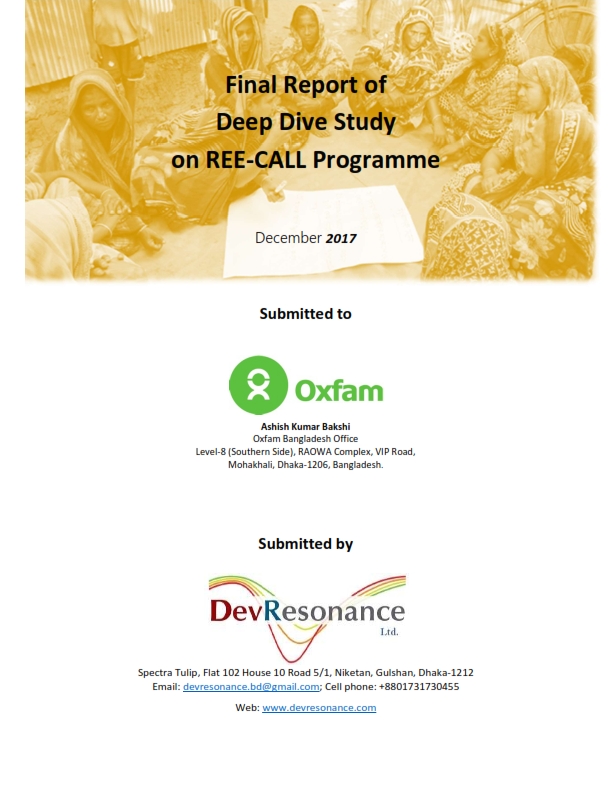This was an endline evaluative study of an initial project titled “Transforming rural livelihood through WASH in climate vulnerable areas in southwest Bangladesh” that was initiated with the objective of reducing WASH deprivation among the poor, marginalized, and disaster vulnerable households living in Dacope upazila. More specifically, the project intended to achieve reduced average water collection time and water scarcity at household level, increased number of households using hygienic latrine in target communities, improve proper hygiene practice among household members and school children, community capacity to exert demand and governance orientation of the Union Parishads increased, and improved household awareness on climate resilience and water safety compliance. Consequently, the objectives of the evaluative study, commissioned by WaterAid Bangladesh and in association with Earth Watch and WWF, were to know the proportion of households in intervention Unions that have access to context specific safe drinking water supply, to measure current water consumption privilege in household (average per capita quantity being used) and average monthly expenditure of the household to collect drinking water, to understand the proportion of households in intervention areas that are practicing water safety plan (WSP), to assess the level of TTC11, Iron and Arsenic in the water of the facilities in intervention areas, to assess the proportion of households in intervention areas that have access to improved sanitation facilities, to measure monthly expenditure of the household for the purpose of sanitation and hygiene, to understand the prevalence of water-borne diseases that include diarrhoea, jaundice, typhoid, dysentery and skin diseases in the intervention areas, especially among the under five children, to measure proportion of households that have hand washing devices near the latrines, to understand awareness of mothers of under 5 children in the household regarding hand washing at five critical times, to assess children’s awareness at school on handwashing at five critical times, to identify to what extent the project has contributed to enhance children’s access to sanitation and MHM facilities at schools, to assess the level of understanding of people living in intervention areas about the risks and impacts of climate change on water, sanitation and hygiene practice, to assess the extent/amount of support has been mobilized in the recent years from the local government (UP, DPHE, etc.) to address WASH needs/crisis in the communities, to identify local government (Union Parishad, DPHE, Upazila Coordination Body, etc.) practices and responses to WASH service delivery in terms of resource allocation-cum-utilization and participatory planning, to identify the involvement of local government in the project implementation and know their contribution in respect of sustainability of WASH services, and to know to what extent the project has addressed the equity and inclusion issues in interventions. The coverage of the study spanned out in Southwest Bangladesh (Khulna). For estimating the sample size, W.G. Cochran’s formula was used. Housewives were targeted as respondents in household survey, while the household heads were considered as alternative respondent if housewives were unavailable. The study used both quantitative and qualitative methods for better triangulation of collected information. The report, based on the analysis, also documented lessons learnt to be able to provide recommendations. To meet the study objectives, data in the endline study were collected through following methods: Quantitative methods (household survey with children survey), Qualitative methods (focus group discussions-FGD, key informant interviews, or KIIs, and consultation), School survey (KII and observation), Water quality test in a laboratory (to identify presence of Thermotolerant Coliform, Iron and Arsenic), Direct observation, and review of secondary sources of information, i.e., annual plan and annual budget of union Parishad, project documents as well as other relevant documents and other similar study reports, Strategies, Policies, as far as available. The endline study was initiated in November 2016 and saw completion in January 2017.
